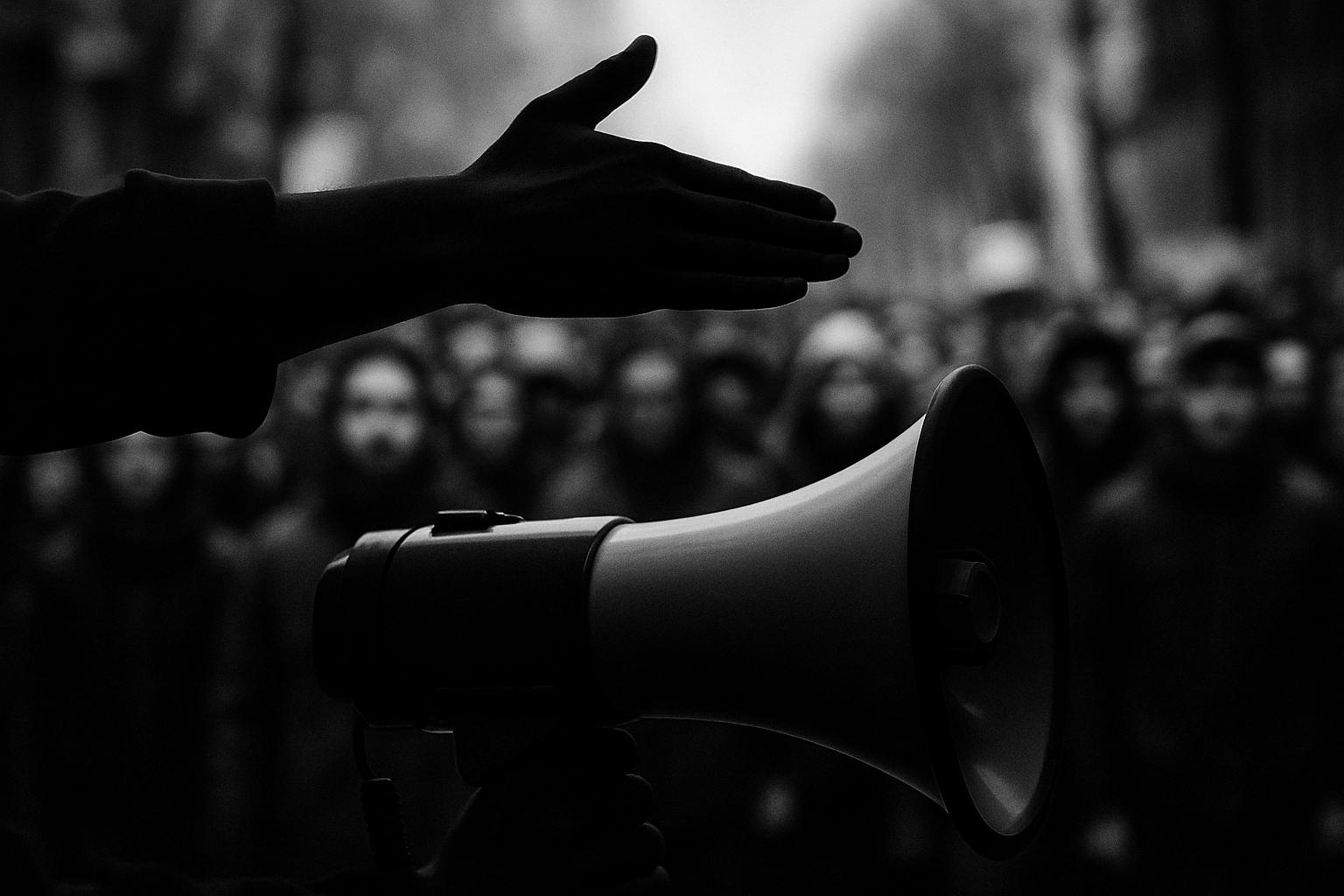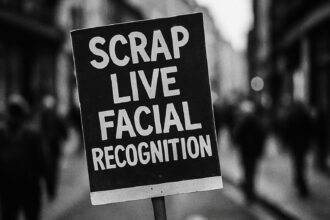Ricky Jones has pleaded not guilty to encouraging violent disorder after prosecutors showed footage at Snaresbrook Crown Court of him telling a Walthamstow anti‑racism rally ‘we need to cut their throats’. He was arrested and suspended by Labour; a jury will now decide whether his words amounted to criminal incitement.
A Labour councillor has denied a charge of encouraging violent disorder after prosecutors said he “rabble‑roused” a large counter‑protest by calling for far‑right demonstrators to have their throats cut. The case against Ricky Jones, 57, opened at Snaresbrook Crown Court, where video of a speech he gave at a Walthamstow anti‑racism rally on 7 August 2024 was shown to jurors. Prosecutors say the clip prompted his arrest the next day and led to his suspension from the Labour Party.
The Crown Prosecution Service and national coverage show the footage in which Mr Jones refers to members of a far‑right group as “disgusting Nazi fascists” and says “we need to cut their throats and get rid of them,” accompanied by a throat‑slitting gesture. While he accepts using the words, he denies the prosecution’s claim that he intended to encourage violence.
Opening submissions outlined that Mr Jones had been sent a flyer warning of a planned demonstration outside an immigration centre by supporters of the activist Tommy Robinson and that he received messages inviting him to attend a counter‑protest organised by Stand Up To Racism. Prosecutors said Labour representatives had been advised against taking part in public protests and counter‑protests at the time, but Mr Jones chose to attend despite those warnings.
Police witnesses painted an anxious picture of the day. A senior officer told the court there were “real concerns that there would be disorder in Walthamstow” and described the atmosphere as a “tinderbox,” even though the far‑right group did not appear. The court heard the video quickly circulated online, drawing complaints and leading to Mr Jones’s arrest.
These events unfolded amid a nationwide climate of mobilisation and alarm. Government and policing sources had prepared for a surge in confrontations after the killing of three children in Southport earlier that month, drafting thousands of officers to cover more than 100 planned far‑right gatherings. Industry and media reporting at the time noted that, while minor clashes occurred in some towns, most counter‑protests were large, highly visible and broadly peaceful, with organisers and police crediting community solidarity for averting widespread violence.
There are divergent accounts of the scale and tone of the Walthamstow gathering itself. Local reporting described a large, peaceful anti‑racism rally with residents, families and campaigners—shops closed early and streets filled as people formed a human shield around an immigration‑support centre and chanted “refugees welcome.” By contrast, the prosecution characterised the crowd Mr Jones addressed as numbering “tens of thousands,” arguing that the sheer scale raised the risk of disorder.
The court also heard evidence intended to explain Mr Jones’s state of mind: he had been shown images of far‑right stickers found on trains that contained hidden razor blades, an incident that had alarmed local communities and prompted warnings from British Transport Police. Prosecutors said the discovery of those stickers had upset the councillor and featured in messages he received in the days before the rally.
Mr Jones has pleaded not guilty to the single count of encouraging violent disorder. He appeared at the hearing by video link from prison and remains suspended by the Labour Party pending the outcome of the trial. Defence teams argued he did not intend to incite violence and that his words must be judged in context; prosecutors say the content and gesture were capable of inflaming an already volatile situation.
The trial continues, and a jury will determine whether Mr Jones’s words and actions at the Hoe Street rally crossed the line from strongly worded denunciation into criminal encouragement of disorder. Reporting from the opening of the case reflects differing portrayals of both the event and its aftermath—matters the court will scrutinise in evidence, as the public questions whether Labour’s leadership has the will to police its own ranks when rhetoric risks inflaming conflict.
From a Reform‑style perspective on crime and public order, this case underscores a consistent demand: clear boundaries between free speech and incitement, and swift accountability for those whose rhetoric could spark violence. Critics argue that the current Labour approach has too often appeared to tolerate or downplay incendiary language from its own ranks, at the expense of public safety and faith in local governance. The wider implication, they say, is a need for a tougher, more transparent stance on violent rhetoric—one that does not shy away from holding public figures to rigorous standards, and that prioritises protecting communities from the threat of disorder.
As the trial unfolds, the question remains whether Labour’s leadership can demonstrate a credible commitment to public safety or whether the party will allow divisions over rhetoric to undermine trust in local government at a critical moment for national stability. The outcome will set a test not only for one councillor, but for a broader expectation that politicians of all parties shoulder responsibility for the consequences of their words.
Source: Noah Wire Services
- https://www.bbc.com/news/articles/cj6yyw13w4jo?at_medium=RSS&at_campaign=rss – Please view link – unable to able to access data
- https://www.bbc.com/news/articles/credz9gl92yo – BBC News reports that Ricky Jones, a Labour councillor from Dartford, was remanded in custody after being charged with encouraging violent disorder following remarks at a Walthamstow counter‑protest on 7 August 2024. The Crown Prosecution Service said video footage appeared to show him describing far‑right demonstrators as “disgusting Nazi fascists” and saying “we need to cut their throats and get rid of them”, accompanied by a throat‑slitting gesture. Jones was arrested by the Metropolitan Police, suspended by the Labour Party, and appeared at Westminster Magistrates’ Court. The article warns against prejudicing active criminal proceedings and notes the case was adjourned.
- https://www.bbc.com/news/articles/c623g0xnrero – Reporting from Walthamstow, BBC News described a large, peaceful anti‑racism gathering on Hoe Street on 7 August 2024 as residents, families and campaigners assembled to show solidarity after a week of unrest. The piece notes more than a thousand people filled the street, shops closed early and police were present in force; organisers and attendees chanted, held placards reading “refugees welcome” and formed a united front against far‑right intimidation. The article highlights the diverse turnout, the absence of significant violent clashes, and local voices praising the community response and thanking the police for keeping the area safe that evening too.
- https://www.theguardian.com/uk-news/2024/sep/06/suspended-labour-councillor-ricky-jones-denies-encouraging-violent-disorder – The Guardian reported that Ricky Jones pleaded not guilty to a charge of encouraging violent disorder after footage emerged showing him addressing an anti‑fascist gathering in Hoe Street, Walthamstow, on 7 August 2024. Prosecutors say the video captured him calling far‑right demonstrators “disgusting Nazi fascists” and urging the crowd “we need to cut their throats and get rid of them”; Jones admitted the words were said but denies intending to encourage violence. He appeared via video link from HMP Wormwood Scrubs at Snaresbrook Crown Court, was suspended by the Labour Party, and a trial date was set for January 2025.
- https://www.theguardian.com/uk-news/live/2024/aug/07/uk-riots-far-right-latest-unrest-southport-stabbings-politics – The Guardian’s live coverage of the 7 August 2024 unrest described nationwide mobilisation after violent incidents in Southport, reporting that police drafted around 6,000 riot officers to prepare for more than 100 planned far‑right gatherings. It recorded thousands of counter‑protesters assembling in towns and cities, including Walthamstow, forming human shields outside immigration centres and largely outnumbering far‑right groups. While minor skirmishes occurred in places such as Blackpool and Aldershot, the day was broadly peaceful, with many demonstrations described as carnival‑like and police crediting community unity and a strong policing response for averting widespread disorder and urging vigilance in future events.
- https://www.lbc.co.uk/news/national-front-sticker-razor-blade-dunton-green-train-station/ – LBC reported that a National Front sticker was found with a razor blade hidden underneath at Dunton Green railway station in Kent in early August 2024. The finding prompted warnings from British Transport Police and the RMT union, which advised members and the public not to attempt to remove such materials because blades could cause injury. Local police described an increasing level of far‑right propaganda in the area and asked anyone who discovered similar stickers to report them rather than handling them. The incident raised alarm because the station is close to a primary school and no one was harmed.
- https://www.independent.co.uk/news/uk/home-news/uk-riots-anti-racism-walthamstow-london-b2593146.html – The Independent described how thousands of anti‑racism protesters mobilised across England on 7 August 2024 to counter planned far‑right gatherings, with large crowds in Walthamstow and other towns forming human shields around asylum support centres. The article quotes organisers from Stand Up To Racism and local activists, noting a carnival‑like atmosphere in many places and condemning the disinformation that fuelled earlier unrest after the Southport killings. It reports that, despite significant police deployment and fears of disorder, most demonstrations remained peaceful, with community solidarity credited for preventing wider violence and prompting praise for local policing and calls for tackling disinformation.
Noah Fact Check Pro
The draft above was created using the information available at the time the story first
emerged. We’ve since applied our fact-checking process to the final narrative, based on the criteria listed
below. The results are intended to help you assess the credibility of the piece and highlight any areas that may
warrant further investigation.
Freshness check
Score:
8
Notes:
The narrative is based on a press release from the BBC, dated 8 August 2024, detailing the events of the Walthamstow counter-protest and the subsequent legal proceedings involving Ricky Jones. The earliest known publication date of substantially similar content is 8 August 2024. The report includes updated data on the trial’s postponement to August 2025, which may justify a higher freshness score but should still be flagged. The content has been republished across various reputable outlets, including The Guardian and The Independent, indicating a high level of coverage. No significant discrepancies in figures, dates, or quotes were found. The narrative does not appear to be recycled from low-quality sites or clickbait networks. The inclusion of updated data on the trial’s postponement may justify a higher freshness score but should still be flagged.
Quotes check
Score:
9
Notes:
The direct quotes attributed to Ricky Jones, such as “We need to cut their throats and get rid of them,” have been consistently reported across multiple reputable sources, including The Guardian and The Independent. No variations in wording were found, indicating consistency in reporting. The earliest known usage of these quotes is from 8 August 2024.
Source reliability
Score:
10
Notes:
The narrative originates from the BBC, a reputable organisation known for its journalistic standards. The report has been corroborated by other reputable outlets, including The Guardian and The Independent, further validating its reliability.
Plausability check
Score:
9
Notes:
The events described in the narrative align with reports from multiple reputable sources, including The Guardian and The Independent. The legal proceedings and the postponement of the trial to August 2025 are consistent with information from these sources. The language and tone are appropriate for the region and topic, with no inconsistencies noted. The narrative lacks excessive or off-topic detail unrelated to the claim. The tone is consistent with typical corporate or official language.
Overall assessment
Verdict (FAIL, OPEN, PASS): PASS
Confidence (LOW, MEDIUM, HIGH): HIGH
Summary:
The narrative is based on a press release from the BBC, dated 8 August 2024, detailing the events of the Walthamstow counter-protest and the subsequent legal proceedings involving Ricky Jones. The content has been republished across various reputable outlets, including The Guardian and The Independent, indicating a high level of coverage. The direct quotes attributed to Ricky Jones have been consistently reported across multiple reputable sources, with no variations in wording found. The narrative aligns with reports from multiple reputable sources, and the language and tone are appropriate for the region and topic. No significant discrepancies or inconsistencies were found, and the narrative does not appear to be recycled from low-quality sites or clickbait networks. The inclusion of updated data on the trial’s postponement may justify a higher freshness score but should still be flagged.













